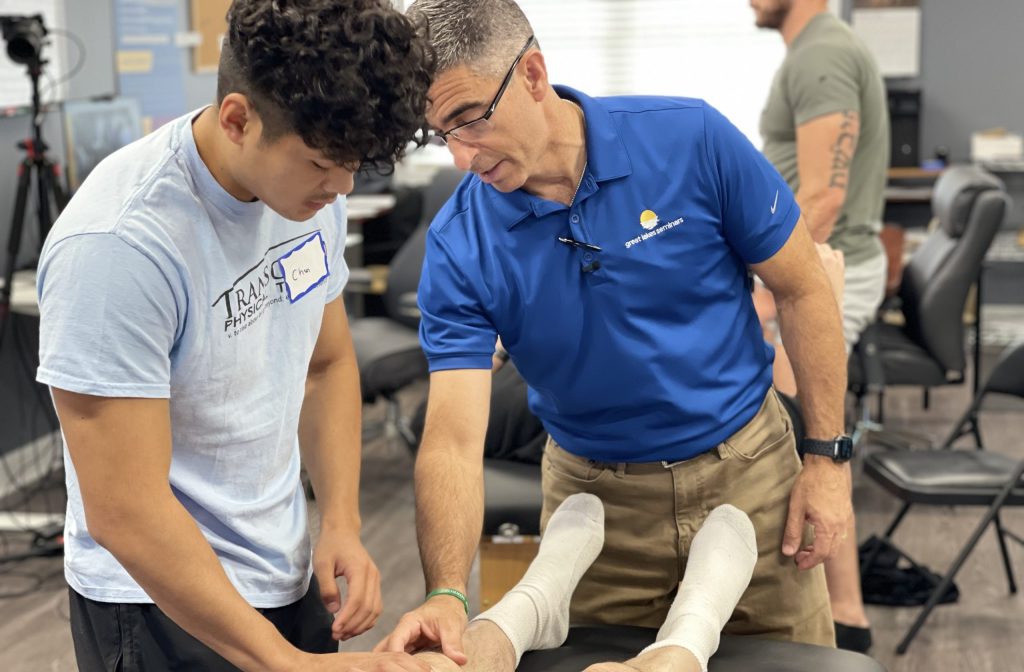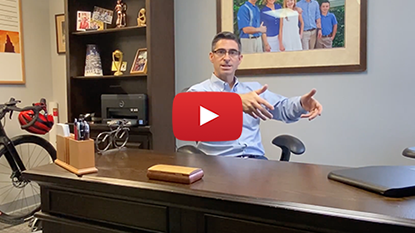The Importance of the Test-Treat-Retest Concept

While doing the AV for many of our Live Hybrid courses, I get to see our great instructors in action. The instructors of the last few courses (MFR, Anatomy, and Lumbar) have all spent time discussing one concept. The concept of test-treat-retest and the impact it can have on the success you have with your patients. Three different courses, but the consistent discussion of test-treat-retest (similar with our other courses). I asked our Founder, Patrick Hoban, about how the concept evolved, why it works, and keys to implementing it.
Evolution of Test-Treat-Retest
Patrick started using the concept of test-treat-retest many years ago when he became tired of not knowing which techniques were actually helping his patients get better and which ones were not. Like many clinicians, he was taught to provide treatment during a patient visit and then assess if they had gotten any better; increased range of motion, decreased pain or improved function. Patrick started to see the inefficiency in this approach. It was challenging to identify which aspects of the treatment were most effective and which ones were less helpful.
Wanting to improve his efficiency, Patrick started testing after every 1–2 techniques. This would help him see if there was an increase in range and/or a decrease in pain. Patrick’s desire to get significant improvement was fueled now that he was focusing on the techniques with impact. He also found that his patients really liked it because he would do a technique and they could see that it helped, or that it did not help, and they would appreciate him continuing to try and find the driver. By doing this and explaining the results to his patients, it helped them better understand their dysfunction.
Seeing Test-Treat-Retest in Action
As Patrick started integrating the concept of test-treat-retest in our courses, registrants loved seeing it in action. He recalls showing people in a shoulder course. He was demonstrating how to increase shoulder flexion on a registrant, tested their shoulder flexion, treated the SC joint and retested it to see little improvement in their flexion, knowing it was not an SC joint issue. Patrick then did the same with the AC joint, showing little to no improvement in flexion. When he eventually moved to the GH joint and got significant improvement, it was clear to everyone where the dysfunction was coming from.
When we integrated this concept into our courses, it really resonated with so many clinicians. They now have a tool to help determine exactly what lead to the improvements their patient’s experience.
Keys to implementing test-treat-retest into your daily treatment:
- Start doing it with 1-2 patients a day to start. Similar to most things, implement it gradually to get comfortable and efficient with it.
- Explain to your patient what you are doing. Let them know that you plan to go through 4, 6, 8 or however many techniques to try and determine what works and what does not. This sets the stage and helps them understand why you may be doing things that do not have any results.
- Explain to your patient after each thing you treat, letting them know that it is good that you now know that something is not contributing to their pain so you will not focus on that, or that since you just got significant improvement, you will continue to work on that area. Patients love to see that you are working through a process to get them better and you have a plan.
- Do a good job documenting what you did, what worked and what did not work. This will help you start the following treatment session focusing on what worked and not wasting time with what did not help. It will also help you get on to other things to test-treat-retest.
In a time of increased focus on outcomes and often decreased time spent with each patient, the concept of test-treat-retest sets you up to have more success with each patient visit, eventually helping get people better, faster.
Share this article:


